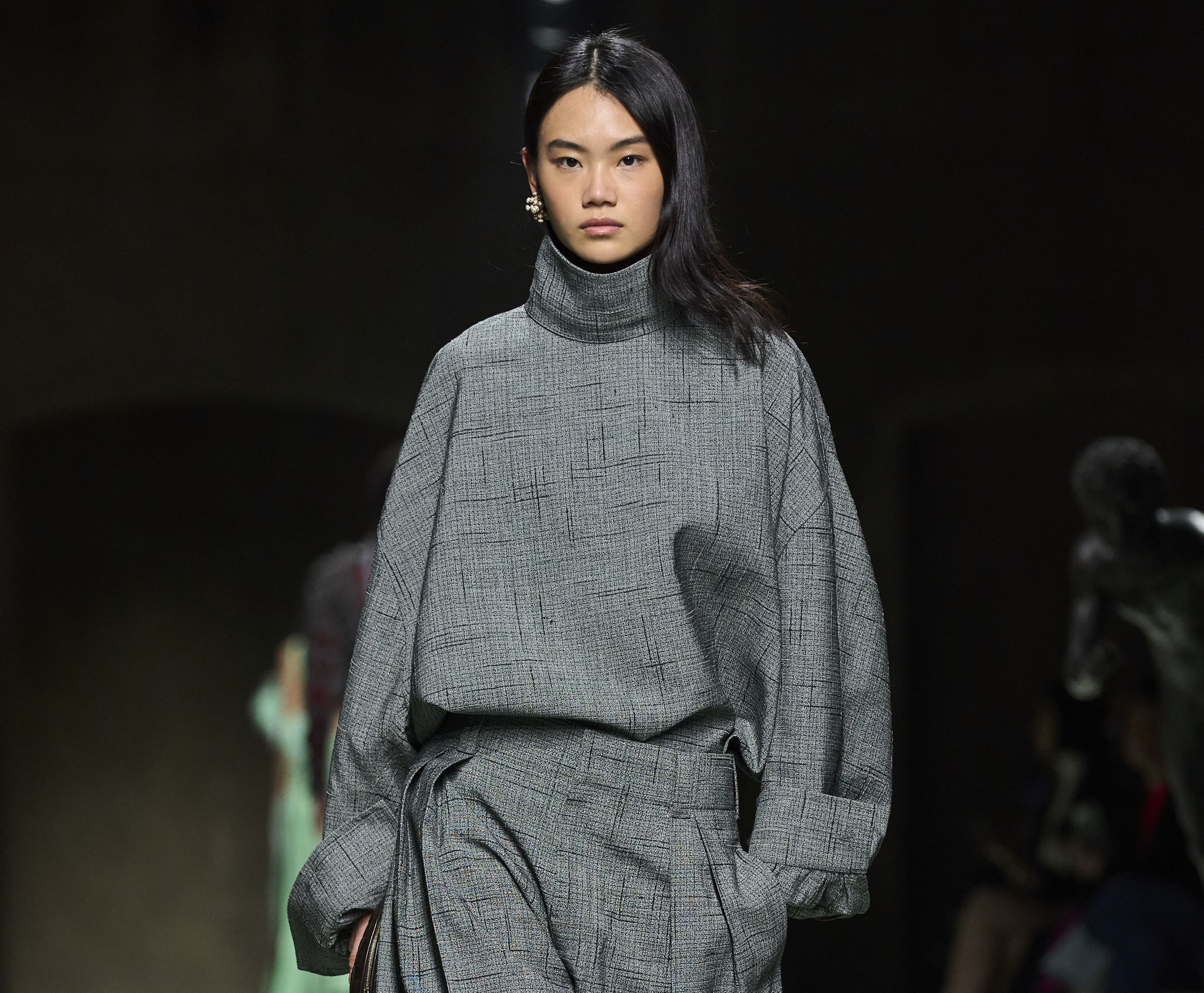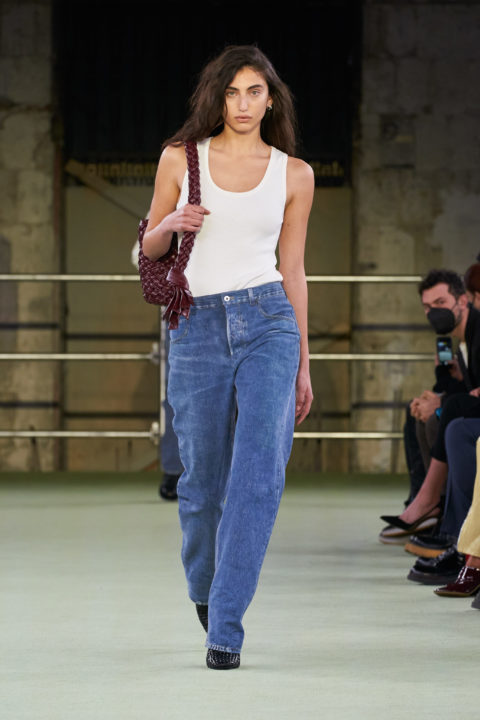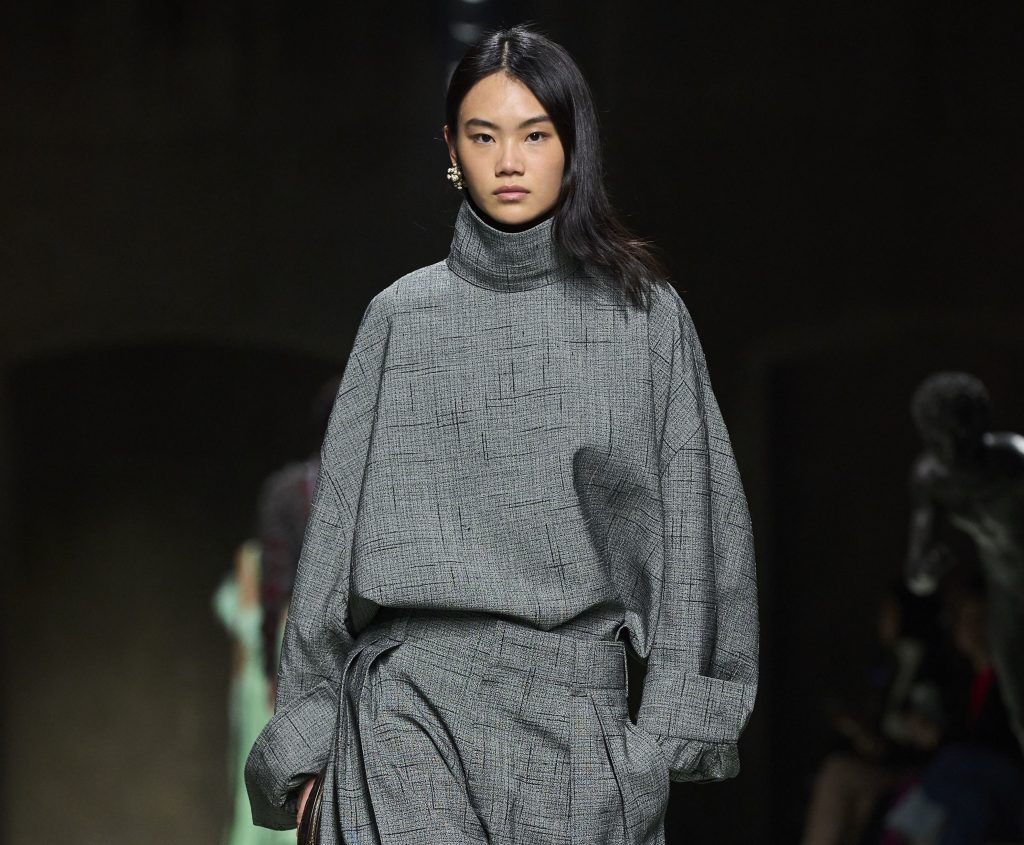
Photography courtesy of launchmetrics.com/spotlight
Throughout the pandemic, surrealist aesthetics emerged as the new norm. But now, there’s a growing appetite for familiarity.
Date March 21, 2023
In recent years, fashion has been doing the absolute most. Pattern clashing, exaggerated silhouettes and fantastical runway stunts became a welcome sartorial escape from the bleakness of day-to-day pandemic life — and no designer is more synonymous with this grandiosity than Jeremy Scott. Since 2013, Moschino’s creative director delivered a signature campy, kitschy, cartoonish approach to fashion. More than anything, he found the humour in clothes at times when the world was otherwise lacking in levity. So when he announced his sudden departure from the brand on March 20, the imminence of a new era became clear.
RELATED: “Recession Core” Is Exactly What You Think It Is, Unfortunately
It’s been just a few months since Alessandro Michele’s departure from Gucci shocked the fashion world. At the time, it seemed abrupt for the creative director — whose flamboyant flair and viral antics like “Twinsburg” redefined Gucci’s aesthetic — to exit when his designs so aptly reflected the maximalist attitudes of the culture. But now, with the loss of yet another seminal creative director, it seems a vibe shift is coming. Fashion is headed away from silliness and into sensibility.
Take Miu Miu. The brand’s now-viral Fall 2023 line focused on everyday dressing, featuring buttoned-up cardigans, knee-length skirts and messy hairstyles for an added dose of reality. Because absurdist fashion imagery has somewhat become the norm, this type of straightforward functionality is now new and exciting.
Perhaps that’s why recent trend-dominating runways have embraced the mundane. At the Fall 2023 presentations, labels like Tory Burch, Proenza Schouler and Eckhaus Latta focused not on gimmicks, but on detail-oriented effortlessness.
At Bottega Veneta, creative director Mathieu Blazy continues to lean away from Instagrammable moments and instead focus on quality craftsmanship. Last year, his runway debut’s opening look — an all-leather outfit disguised as a tank and jeans — served to further prove the possibility of experimentation within minimalism.
 Photography courtesy of Bottega Veneta
Photography courtesy of Bottega Veneta
When compared to what we’ve been seeing for the past few years, these designs are decidedly less visually stimulating. And maybe that’s the point. Because they’re void of “gotcha” shock value, minimalist moments require us to look a little harder, and ultimately challenge us to ask ourselves: What’s our taste?
In that regard, personal style is embedded in inconspicuous clothing. It requires you to dress from the gut, rather than reaching for the flashiest signifier of internet fashion intel. Instead of a disorienting race toward newness, unembellished styling is about circling through what works. There’s an element of truth baked into the less-is-more aesthetic, and it seems the world is once again searching for that.
In the early 2010s, while still recovering from the 2008 recession, fashion moved away from Y2K glitz and into frugality. Flaunting wealth became taboo, and logomania was replaced with the prominence of bare-bones branding. Similarly, amid today’s economic uncertainty, there’s a newfound appreciation for no-nonsense clothes that give it to you straight.
The ubiquity of The Row, Mary Kate and Ashley Olsen’s label, is one such example. With its logo-less separates and timeless designs, it epitomizes the pivot into quiet luxury and the emphasis on wearability. On TikTok, it has inspired a cult following in search of dupes from high-quality (but more affordable) retailers like Uniqlo and COS. And for influencers who can afford its expensive basics, it’s become a staple of #OOTD videos.
Much like The Row’s less-is-more appeal, reigning aesthetics du jour increasingly lead back to 2010s fashion — like the meteoric rise of ballet flats and the resurgence of Tumblr-era Twee. Even this season’s most talked-about trend, tights as pants, is vaguely reminiscent of the nylons-under-shorts uniform of 2010s-era It girl Alexa Chung. And it’s all a notable departure from the inflated, saturated ensembles that dominated the dawn of the decade.
Over the years, the respective fanciful visions of Jeremy Scott and Alessandro Michele successfully romanticized the everyday. But now, it seems the fashion world has an appetite for the familiar. The greatest signifier that this wave is here to stay? The return of Phoebe Philo, whose eponymous line drops later this year. The former Celine creative director pioneered the streamlined styles that defined the previous decade and emphasized the simple relationship between clothes and the body.
With a refreshed focus on pragmatism, perhaps fashion is taking the time to slow down; to sit with the vulnerability of plainness and rely on nothing but intuition to get dressed. More than anything, this pared-down approach puts the decision-making power into the wearer’s hands.

